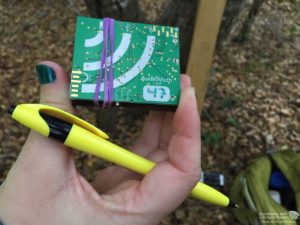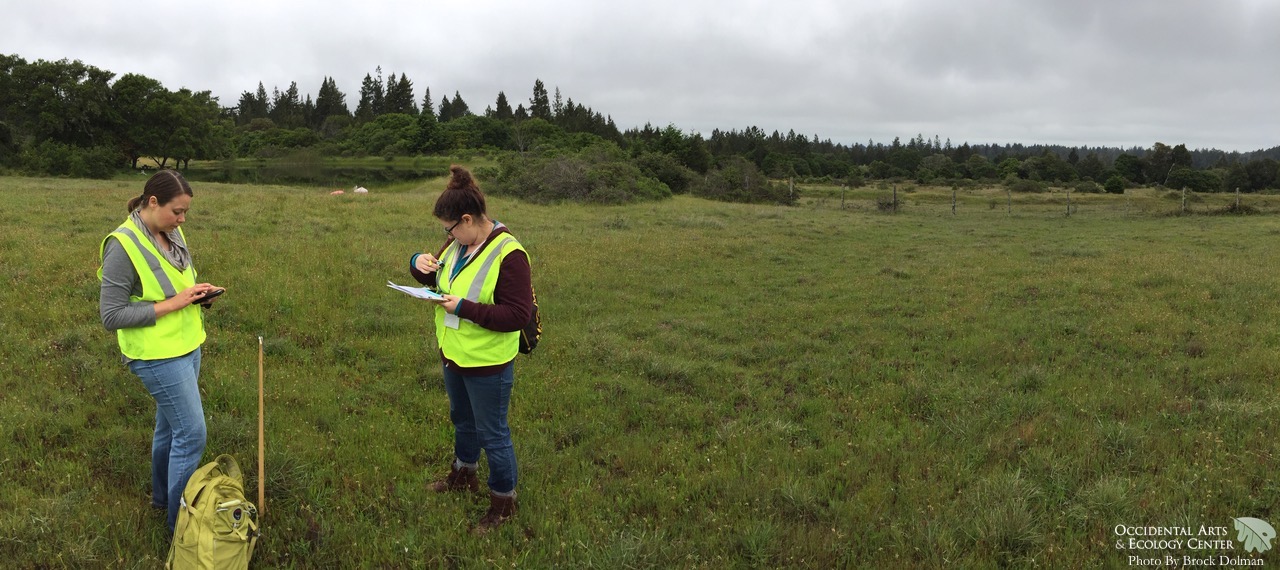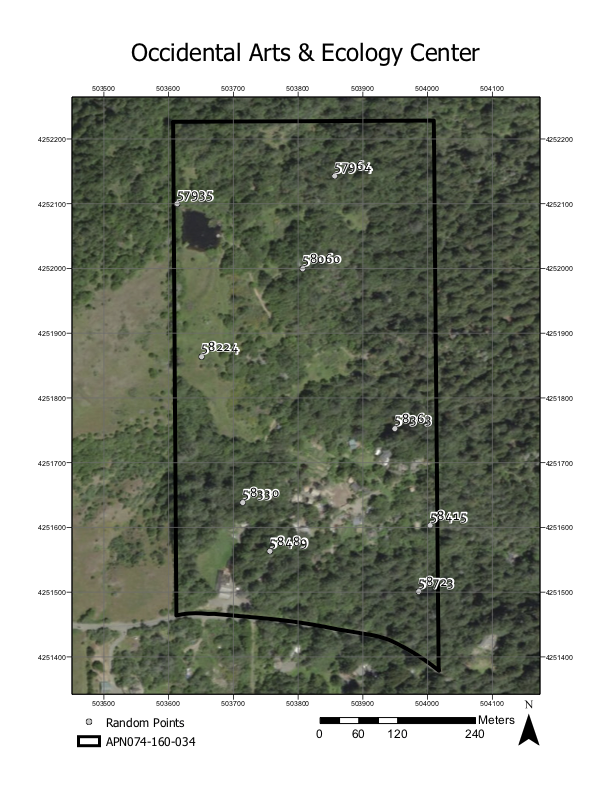Enhancing and securing habitats for biodiversity is one of the core goals of the OAEC Wildlands Program, using traditional knowledge and modern science to tend the 70 acres. The diverse plant communities here range from coastal prairie grasslands to redwood forest, and are home to 106 species of birds.
In early May of 2019, OAEC’s Wildlands Program team met with Point Blue Conservation Science staff to deploy a number of sensors, called Audiomoths, at various randomly selected locations on the preserve. The goal of this project is to monitor bird diversity in Sonoma County using automated sound recorders placed across the landscape. The soundscape data, in conjunction with images from state-of-the-art sensors in airplanes and satellites, is processed to identify bird species and will be used to assess the factors that determine bird distributions over a variety of landscapes. The study locations span a wide range of public and private land throughout Sonoma County, including habitats across the urban-wildland gradient. At each of the study sites, citizen scientists place automated audio recording devices on trees, fences or stakes and leave them recording three to four days, with automated programming that turns on at one-minute intervals every 10 minutes.
We look forward to getting the report back after Point Blue has catalogued the data. We are especially eager to compare their findings for that 3-day recording period against OAEC Wildlands Program Director Brock Dolman’s seasonal species list based on his own observations of birds at the site over the past 25 years. For the real bird nerds, have a look at his list of Arrival dates for selected neo-tropical songbirds that breed at OAEC.


This NASA-funded project is led by Dr. Matthew Clark, a professor at Sonoma State University (SSU), in partnership with Point Blue Conservation Science, Pepperwood Preserve, the Sonoma County Agricultural Preservation and Open Space District, UC Merced, Northern Arizona University, and local chapters of the Audubon Society.






